MXA RACE TEST: THE REAL TEST OF THE 2021 BETA 300RX MOTOCROSS
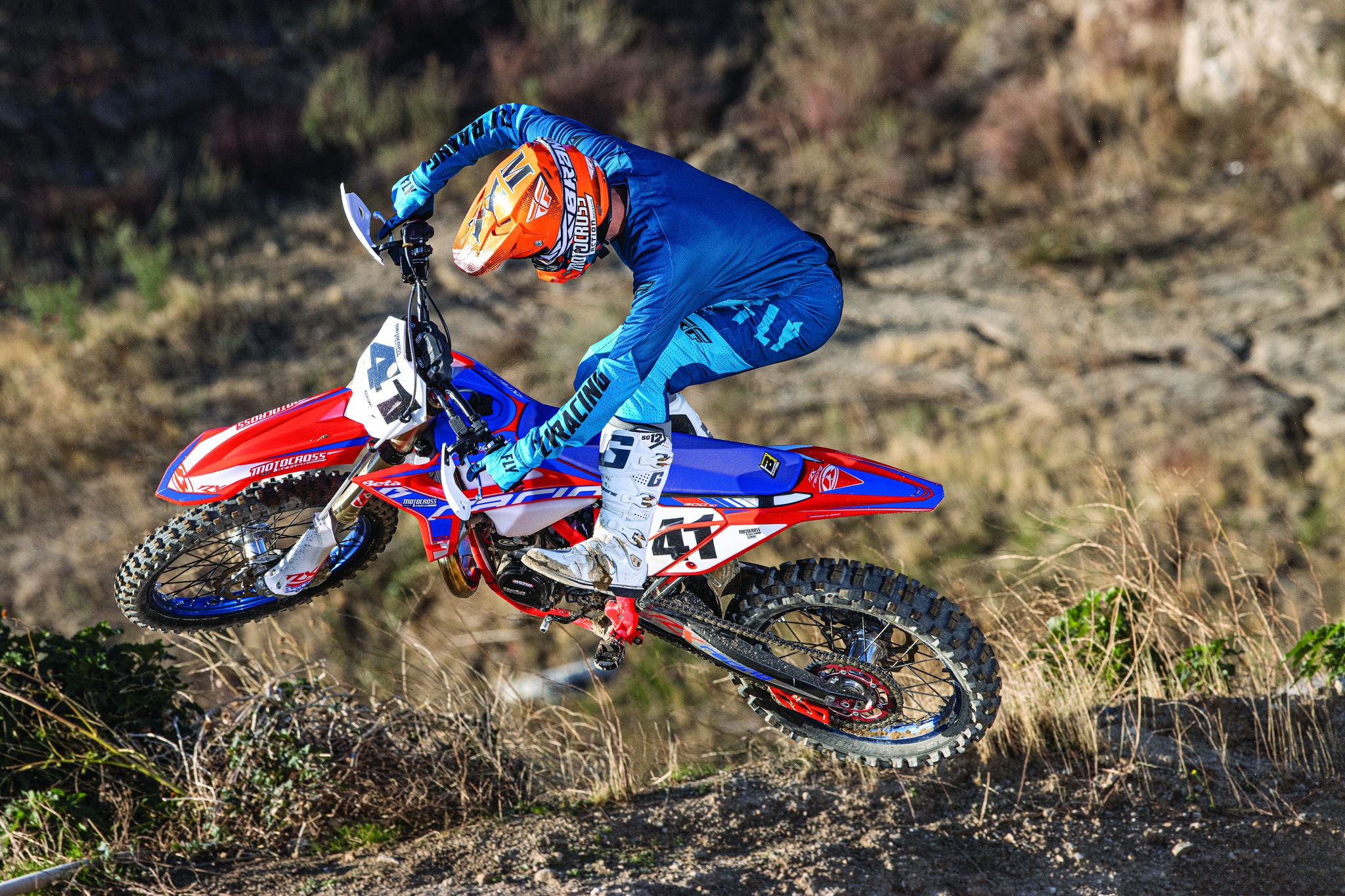
Q: FIRST AND FOREMOST, IS THE 2021 BETA 300RX BETTER THAN THE 2020 MODEL?
A: Yes! Only because there was no 2020 Beta 300RX. The 2021 Beta 300RX is the first motocross bike that Beta has produced in close to half a century. The Italian company, which has been around since 1905, can’t be faulted for focusing on what was working, and that was off-road and trials bikes. For 2021, Beta kicked into high gear, signing off-road ace Jonny Walker in Europe and starting a factory MXGP motocross team with Jeremy Van Horebeek at the controls. Since Beta only makes one motocross bike (the 300RX two-stroke) out of 18 off-road models, you might be thinking they would race the 300RX in the MXGPs. Not so. The 300RX offers a great two-stroke engine package, but it is no match for the power of works 450cc four-strokes.
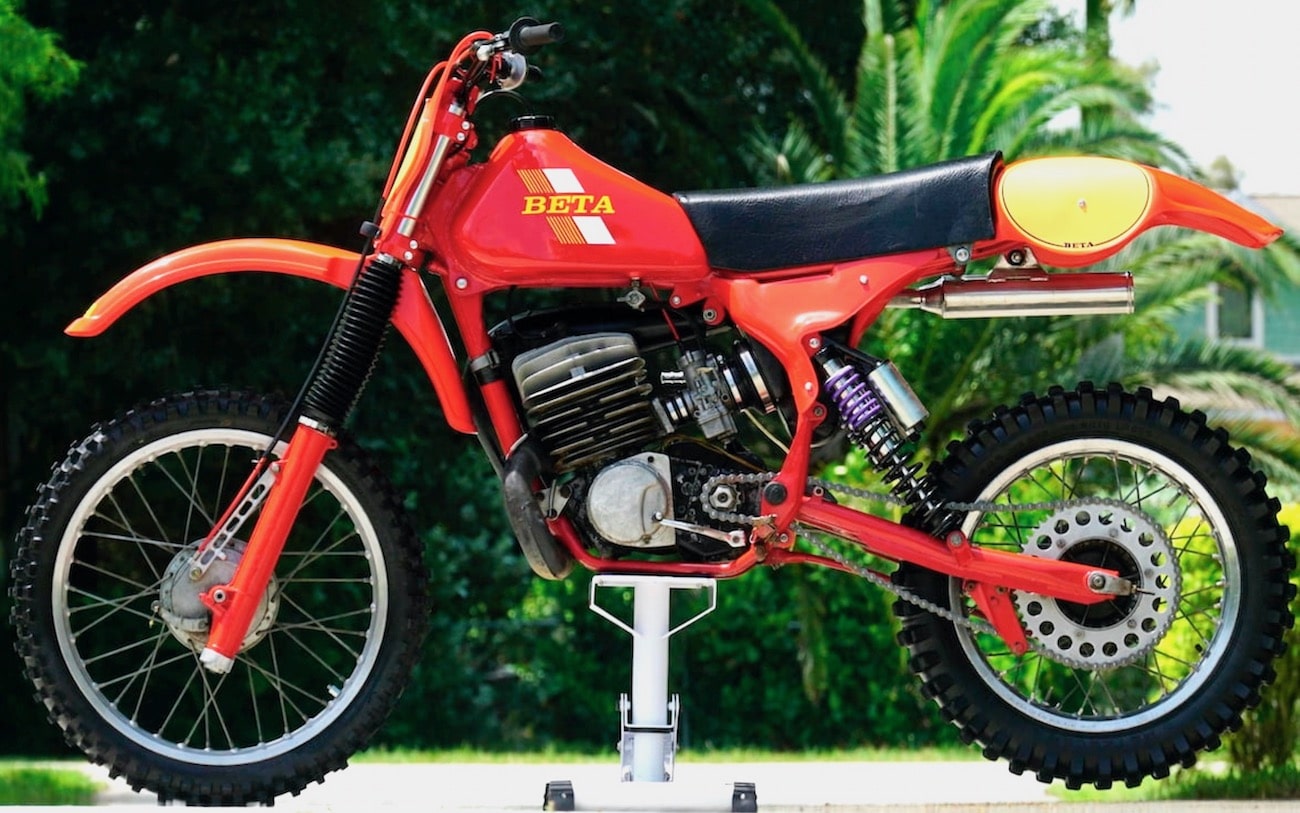
Just as Beta used its 300RR off-road two-stroke as the base for the 300RX motocross bike, Beta will use its 430RR Race Edition off-road bike as the basis for the MXGP motocross bike. And, if things go well in Europe, Beta plans to have a factory presence in the 2022 AMA Pro 450 National Motocross Championship. Do we think Beta is too ambitious? No. After putting time on the electric-start, two-stroke 300RX, we believe this engine outperforms Beta’s big-name competition. If they can do that, the sky is the limit.
Q: WHAT ARE SOME OF THE KEY FEATURES OF THE 2021 BETA 300RX?
A: You really need to take a close look at the Beta 300RX to unlock some of its secrets. At first glance, we thought, “This is a really cool-looking bike, but it looks like it was made for a giant.” We honestly weren’t expecting much out of the Italian bicicletta sporca. Many boutique brands avoid letting MXA test their machines. They are afraid of us picking apart the flaws in their “baby.” The ones that are willing to step forward and have their bikes put through the same test regimen as the “Big Seven” want to prove that their bikes can succeed. Most know that their bikes will struggle in the hands of MXA, but they want an unbiased comparison of how their bike stacks up, what parts need to be improved and where they stand. Lots of those brave companies, which at one time included KTM, have risen to the occasion.
Many people think that MXA takes joy in criticizing motocross bikes, but that’s not true. We test bikes with a rigorous regimen because we want to see them get better so the consumer can feel comfortable buying one. We love testing. We love figuring out how to make bikes better. Our ultimate goal is to help bikes and products get better with our feedback.
In that light, here are the things that stick out on the 2021 Beta 300RX.

(1) Seat. We will start with the cool factor first. The seat has a push-button release on the left side of the bike that takes the seat off in seconds. There is nothing else like it on the market. We love it. On the other side of the coin, this seat is flat all the way from the rear fender to the tank, and it is too tall for tall riders. No problem, we called Beta and they sent us a lower off-road seat. By the sounds of it, they are ditching the tall seat in 2022.
(2) Map switch. At first, we weren’t sure what the button mounted in front of the gas tank did. We pushed it, but nothing happened. We thought it was a leftover part from an off-road model that turned the headlight on and off. Finally, we took a close look at the button and saw that it had a pictograph of a sun and rain on the switch. The sun represented a loamy track and the rain was for a slick track.
(3) Power-valve adjuster. The Beta 300RX power-valve adjuster is very much like the one on the KTM two-strokes, except better. The Beta power valve is adjusted with an Allen key on the left side of the bike. If you don’t know much about power-valve adjusters, they preload a spring that controls how quickly the power valve opens. Turning the power-valve adjuster loosens or tightens the spring preload. The further out you go, the more explosive the powerband because the power valve opens up quicker. The further in you go, the smoother and longer the powerband is because the power valve opens slower.
Due to emissions regulations in Europe, two-strokes are not allowed to have adjustable power valves. In fact, KTM’s owner’s manual states that its power valve is not adjustable. But it is, and we adjust it on every KTM two-stroke we test. Maybe Beta has the same warning in its owner’s manual, but we didn’t get a manual—and power-valve adjustments are not verboten in America. Tuning the Beta power valve makes big changes. We did only one-quarter to one-half turns when adjusting it. Another cool thing you can try is Beta’s different power-valve spring rates that can tailor the power even more.
(4) Electric start. We used to love knowing the correct technique to start each two-stroke. Now that electric starting has become common place, we are spoiled. We have been coddled by electricity and don’t ever want to kickstart a bike again (any more than we want to chop wood to heat up a cup of coffee). We love that Beta offers an electric-start, two-stroke motocross bike.
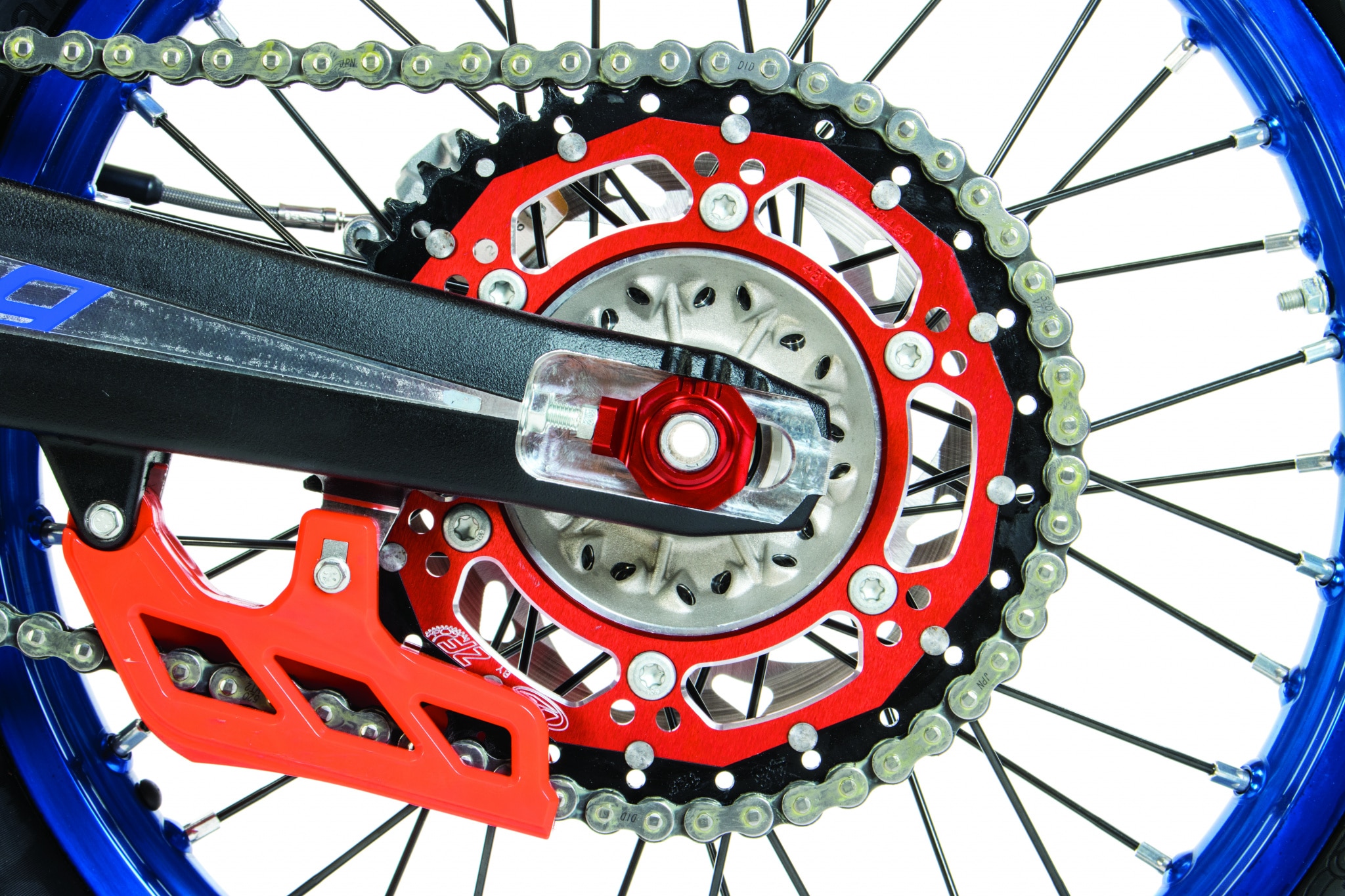
(5) Hydraulic clutch. The Brembo self-adjusting hydraulic clutch is a thing of beauty. If you have ever read a KTM test in MXA you know how much we like to brag about Brembo’s incredible hydraulic knowhow.
(6) Sachs shock. You wouldn’t know it from their motocross presence, but Sachs is a much bigger company than Kayaba or Showa. They build all sorts of stuff. Motocross suspension is a small part of their bottom line, but they are commonly found on European street, cruiser, adventure and play bikes. We didn’t start with a good attitude towards the Sachs shock because of past experience, but once we figured out how to adjust the shock, we took a liking to it. One highlight was that the high-speed compression adjuster could be turned by hand. That highlight was offset by the lowlight that the rebound clicker could not be accessed if the RX300 was on the stand. We had to take the bike off the stand to adjust the rebound.
(7) Wheels. The wheels have billet hubs and real Takasago Excel blue-anodized rims.
(8) Sprocket. The rear sprocket is an ultra-durable ZF dual-compound steel/aluminum unit.
Q: HOW DOES THE BETA 300RX RUN ON THE TRACK?
A: The first time we started up the 300RX, it sounded exceptionally crisp. The carburetor on the Beta is the same as on the Yamaha YZ250—a Keihin PWK38. The jetting was spot on for the tracks we rode. We only went out on the air screw a half turn in the morning when it was brisk. We were thrilled that we didn’t have to waste time fiddling with brass, which happens more than you think.
The MXA test riders were enamored by the power delivery. The 300RX power was incredible. It offered a smooth gradual power off the bottom that grew rapidly and kept on revving. The breadth of power felt more like a 250 two-stroke than a 300. The power was so smooth that it would sneak up on you. Right off the bat, without any adjustments, we knew this engine’s powerband was the best in its class. The power doesn’t get away from you, and it doesn’t sign off quickly like the KTM 250SX. The rear wheel digs in, finds traction and goes without any effort.
Q: HOW DID WE LIKE THE POWER ADJUSTMENTS?
A: We were happy with the stock setup, but we knew we needed to try all the options. First, we tried switching the mapping back and forth between the two settings. All our test riders could appreciate the difference between the two settings, and we knew that there were times and places when we would get full use out of both of them. The softer map really softened up the first part of the curve and then ramped up with a very linear and long rev to the top. This map saved test riders’ energy for long motos.
As for the best power-valve setting, our best setting was from 1 to 1-1/2 turns in from all the way out. On high-speed tracks, faster riders seemed to lean towards a half turn in from all the way out. The powerband was extremely peppy and playful. The 300RX’s power could be too much for test riders in the longer and rougher motos, as they started to get arm pump and fatigue. Luckily, they could control the power with the adjuster. We were able to make the bike too fast and too slow without losing sight of the broadness of the powerband. Every rider, whether fast or slow, found a setting he liked.

Q: HOW DID THE BETA 300RX HANDLE?
A: The balance of the Kayaba AOS forks and Sachs shock were way off from the git-go. The shock sat high, and the forks were super soft. With sag at 105mm, even our tallest riders were on their tippy toes. We dropped the sag down to 110mm, put 30cc of oil in each fork leg and adjusted the compression setting all the way stiff. When we conferred with Beta about the soft forks, they said they had a stiffer setting ready to put into the 2021 Beta 300RX, but with everything that went on in the motorcycle industry in 2020, they were unable to make it happen. The bottom line is that they are aware of the issue and will make changes to the 2022 model. Our shade-tree adjustments brought the 300RX closer to being balanced fore and aft. It got the chassis in the ballpark.
We won’t beat around the bush. It took our test riders some time to get a grip on the handling. Why? A few reasons. (1) The gas tank is big and wide. It holds 2.5 gallons, which is a 1/2 gallon more than the KTM 250SX. It has the same feeling as riding the wide-load Yamaha YZ250F or 450F. (2) The front of the seat is 3/4 of an inch further back from the head tube, as on a KTM. This may not seem like much, but when our test riders pushed the 300RX in corners, it would stand up. Test riders had to remember to slide their body weight an inch farther forward on the seat to get enough weight on the front end to keep the 300RX’s front wheel planted. (3) The Sachs shock had a different feel. Not in a bad way, but it worked differently from what we were used to. It gave us a similar feeling to the WP Drop-Out shock (without the noise). Much like the purpose of the almost-forgotten Drop-Out shock, it was excellent at keeping the rear wheel in contact with the ground. This was a weird feeling at first, but once we learned its traits, we appreciated the shock’s movement.
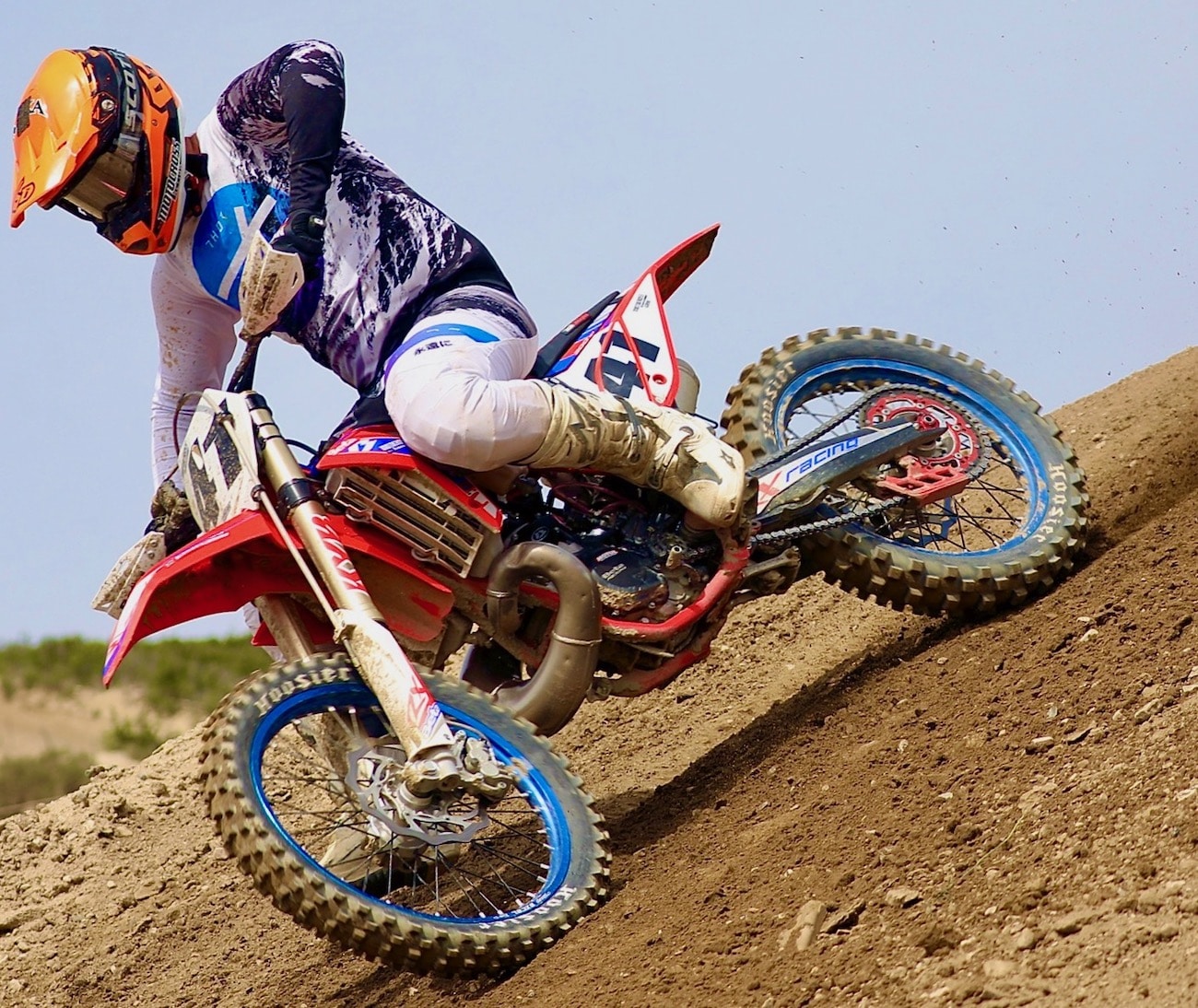
It didn’t take long for the MXA crew to get familiar with the 300RX’s peccadillos and begin to slice and dice their way around the track. The bike was great at turn-in, which always happens on bikes with soft front suspension, but held its line throughout the apex on the corner, as long as the rider was far enough forward on the tank. At one point, we decided to slide the forks up in the triple clamps to compensate for our rearward body position, but we ended up fighting against ourselves in terms of the bike’s balance. Straight-line stability was good after we added oil in the forks to help hold them higher in their stroke under a load.
The only technical oddity that every test rider complained about was that the 300RX felt rear heavy. It was hard to get the rear end around when throwing it over in the air. You didn’t feel the added weight when the wheels were on the ground, but we felt the added momentum when we were trying to slow the bike down.
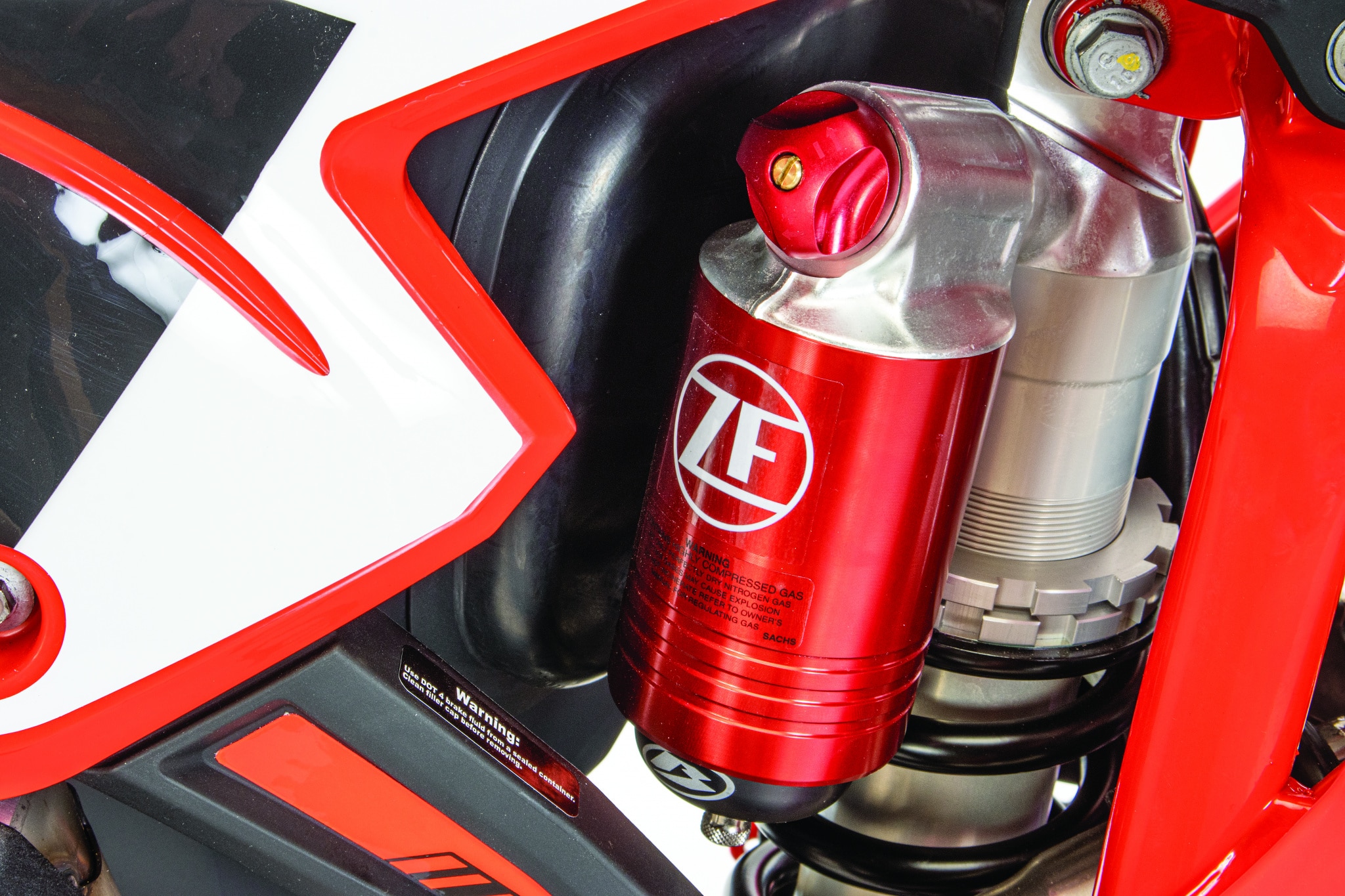
Q: WHAT DID WE HATE?
A: The hate list:
(1) Forks. The Kayaba AOS forks have potential, but without adequate spring or valving support, they are no good. The fork is way too soft for motocross.
(2) Spoke. The spoke by the rim lock came loose every time we went out on the track. We ended up using medium-grade thread lock on it.
(3) Seat. The seat height is made for giants. We used Beta’s lower enduro seat so we could touch the ground.
(4) Gas tank. The off-road gas tank is big and wide. Beta’s motocross bike needs a smaller and narrower tank that holds no more than 2 gallons of gas. Plus, we don’t like Beta’s tiny gas filler opening. It makes it impossible to tell when the tank is full until your boots are all wet.
(5) Weight. The 300RX needs to shed some weight.
(6) Front fender. The front fender hits the front tire. It is loud and annoying.
(7) Price. The $9199 MSRP is $900 more than a KTM 250SX, although it is $200 cheaper than its Italian competition, the electric-start TM 300MX.
Q: WHAT DID WE LIKE?
A: The like list:
(1) Seat removal. The single push-button seat release is awesome. It is fast and easy.
(2) Map switch. The two maps were great. They were different enough from each other to be useful in various situations.
(3) Tires. We appreciate the Michelin Starcross tires front and rear. They worked well.
(4) Carburetor. The Keihin PWK38 was jetted perfectly from the factory.
(5) Electric start. Why did a small boutique brand like Beta come out with an electric-start, two-stroke motocross bike before the KTM juggernaut? We really like this feature.
(6) BPV. The “Beta Progressive Valve” adjustable power valve was handy. We were able to tune the power characteristics to each test rider’s liking.
(7) Engine. The Beta 300RX powerplant offers the best power profile in the two-stroke market. It does everything you want and more.
(8) Wheels. The quality Excel rims are laced with billet hubs.
(9) Hydraulic clutch. As always, the Brembo self-adjusting hydraulic clutch is bulletproof.
(10) Rear sprocket. The dual-compound rear sprocket offers the durability of a steel sprocket but without the added weight. Well, there is some added weight, but close to half that of a full steel sprocket.
(11) Sachs shock. Although it took time to get used to, we liked the action of the shock once we figured it out. The ability to adjust the high-speed compression by hand was pretty cool.
(12) Fuel overflow. We don’t like the small gas tank filler hole, but we love the small trench that goes around it. This groove catches any spilled gas and drains it into a long vent hose. If they had a larger tank filler hole, there would be a lot less spillage.
Q: WHAT DO WE REALLY THINK?
A: Beta is off to a great start. Yes, they do have things to work on before they will be ready for prime time, but they won half the battle with a great engine.
MXA’S 2021 BETA 300RX MOTOCROSS SETUP SPECS
This is how we set up our 2021 Beta 300RX for racing. We offer it as a guide to help you find your own sweet spot.
KAYABA AOS FORKS
The stock fork setup is really soft. In 2021, we have seen overly soft forks on the CRF450, KX450 and RM-Z450, so Beta is not alone. In most cases, there are riders who are light enough, smooth enough or talented enough to run these soft settings, but they don’t make up the majority of motocross buyers. We can’t live with metal-to-metal harshness. As a quick fix, we put 30cc of oil in each fork leg to firm up the Beta’s 48mm Kayaba forks. For hardcore racing, we recommend this fork set up for an average rider on the 2021 Beta 300RX (stock specs are in parentheses):
Fork springs: 4.5 N/mm
Oil height: 555cc (525cc)
Compression: All the way in (8 clicks out)
Rebound: 9 clicks out (8 clicks out)
Fork-leg height: First line
Notes: Most riders will need to send their forks to their local suspension tuner to get the setup they desire. The forks need stiffer springs and firmer damping.
SACHS SHOCK SETTINGS
We have ridden bikes with Sachs shocks before—a long time ago. They came on the late-model, Italian-built, Husqvarna TC250s back in 2011. That shock had a very springy feel and was at its best in small chop. We didn’t hate the new Sachs shock on the 2021 Beta 300RX, but it was in the very difficult position of being mounted on a bike with ultra-soft front forks. It is common knowledge that when one end of a bike doesn’t work, the other end will not only not work either but will often feel worse because it has to carry the whole load.
Once we stiffened up the front forks, the shock began to feel better. We had to run lower than normal sag (110mm) and go very soft on the low-speed compression and much firmer on high-speed compression. Riders above 180 pounds will need to go up on the shock spring rate from 52 N/mm to 54 N/mm. For hardcore racing, we recommend this shock setup for the 2021 Beta 300RX (stock specs are in parentheses):
Spring rate: 52 N/mm
Race sag: 110mm (105mm)
Hi-compression: 3 clicks out (20 clicks out)
Lo-compression: 18 clicks outs (22 clicks out)
Rebound: 11 clicks out (15 clicks out)
Notes: With so few Sachs-equipped motocross bikes in the American market in the last decade, experienced Sachs tuners are hard to find. Do your research and find someone who specializes in them. Start with Stillwell Performance in Arizona.



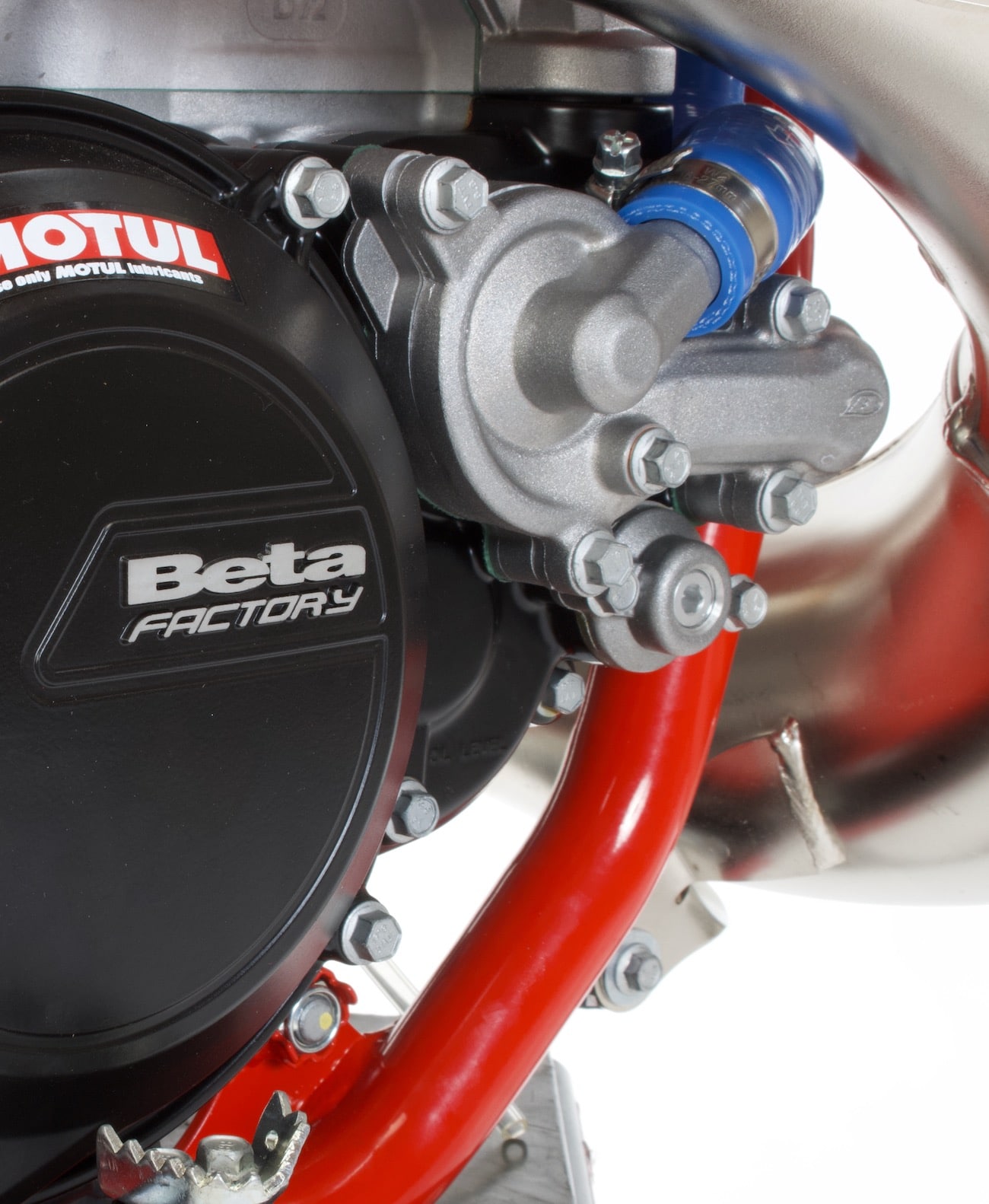




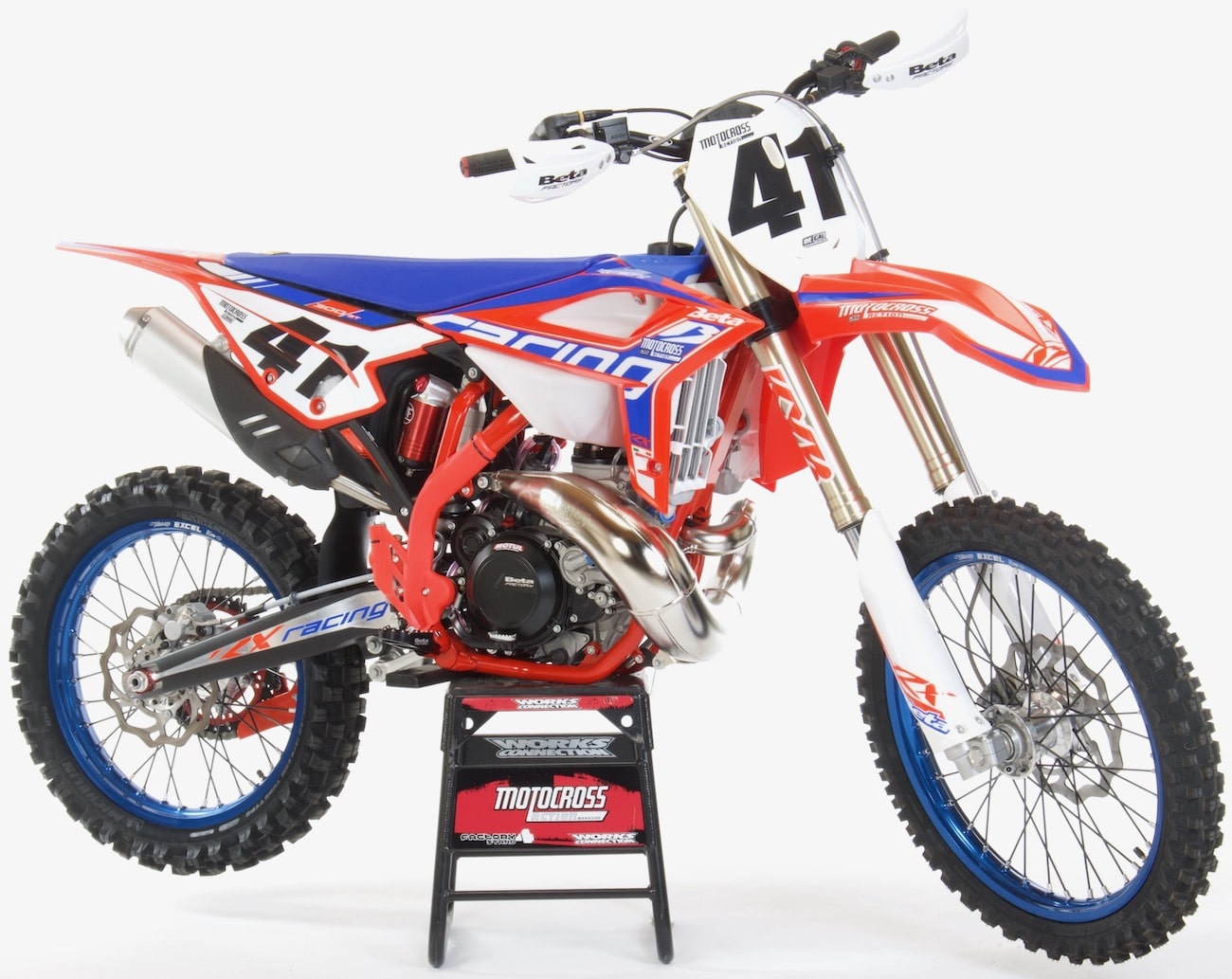
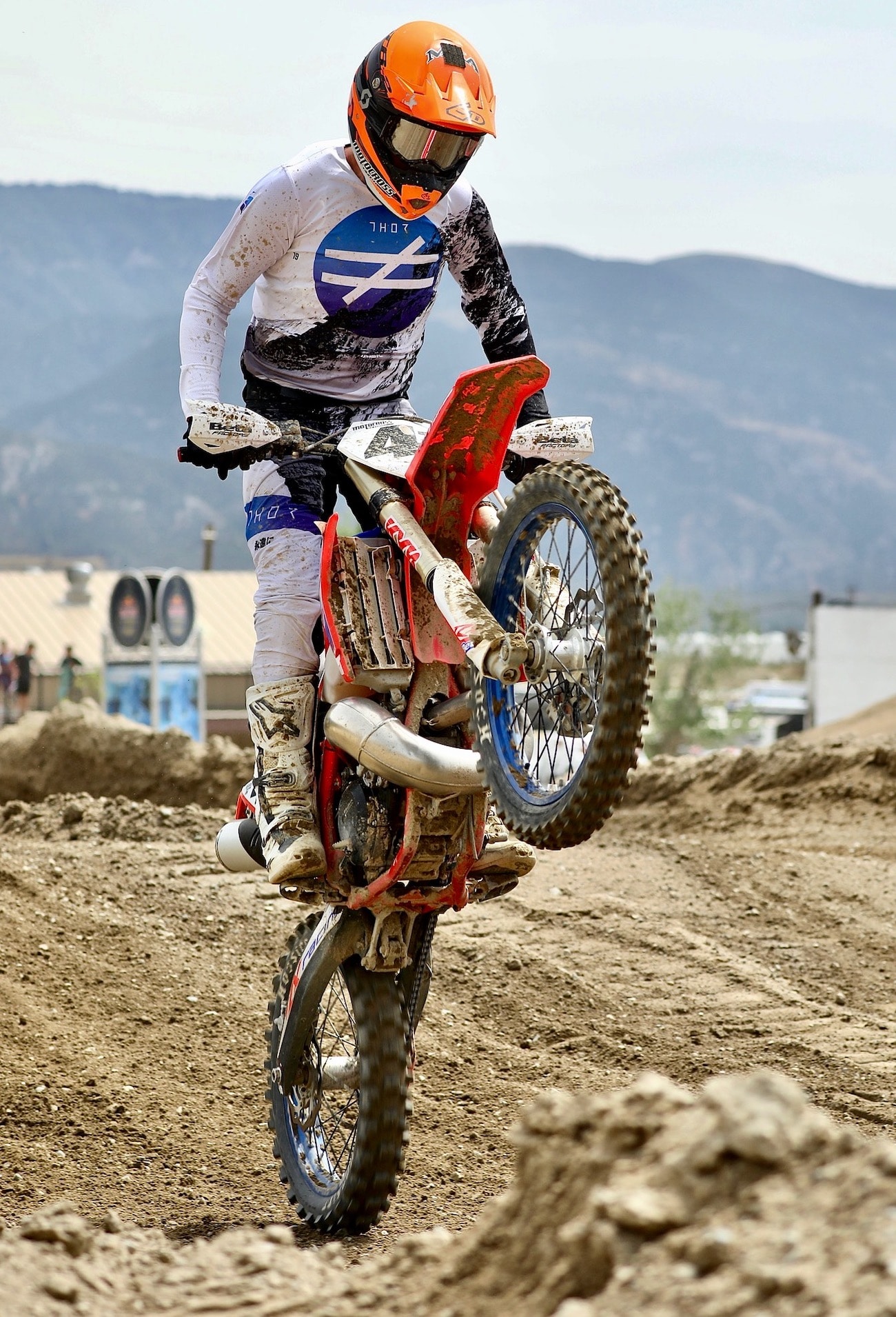



Comments are closed.